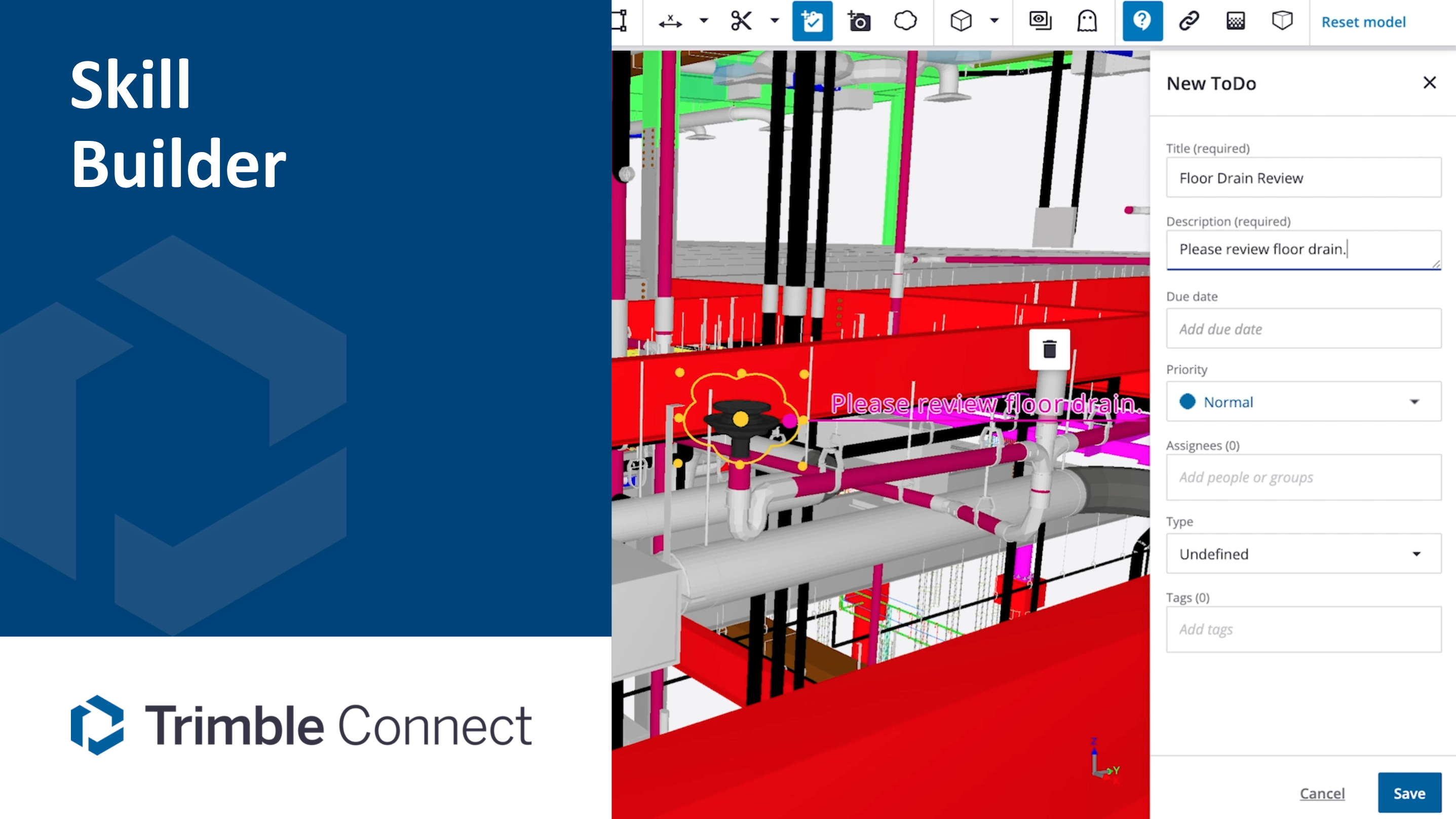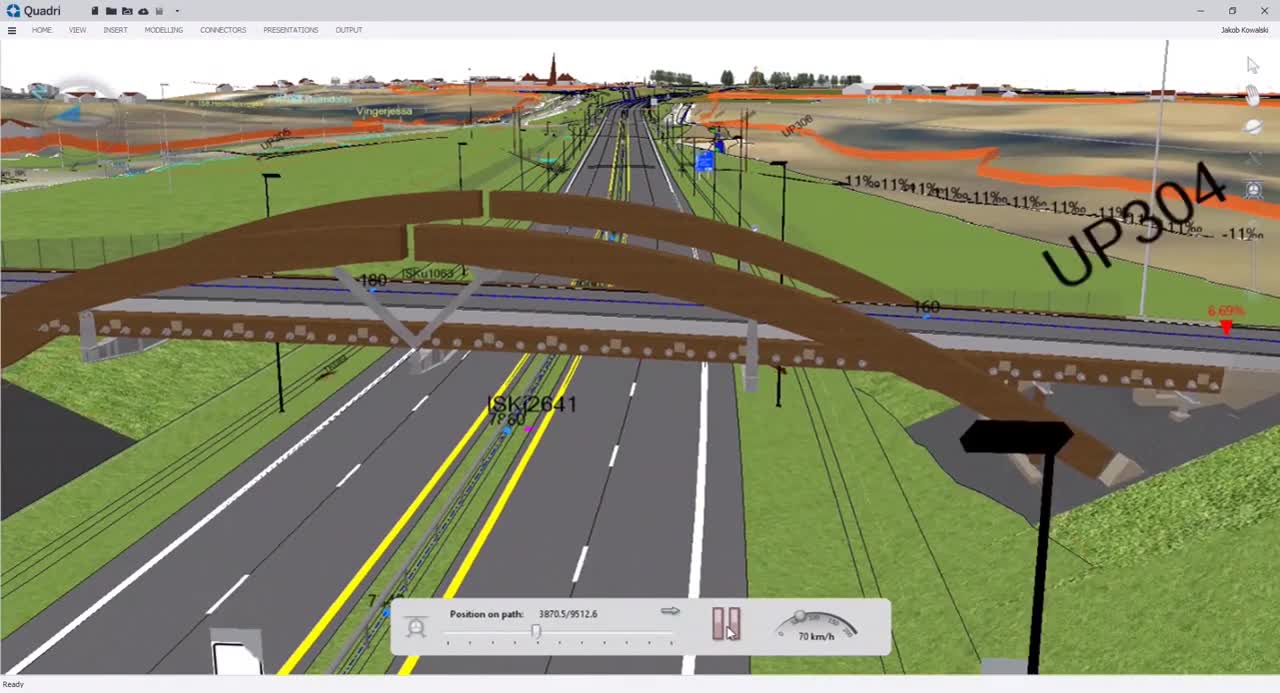What Is a Common Data Environment and How Is It Used In Construction?
Construction projects create a massive amount of data—and data creation is just the beginning. The data needs to be properly organized, managed, distributed, and analyzed to run a project efficiently. That’s a tall order for a project team made up of different companies with different ways of doing things. Each stakeholder often uses their own assortment of software and tools to manage their data, creating fragmented workflows that produce unreliable data.
A common data environment brings all of your project workflows under one roof. Imagine a tool that stores and manages reliable data for the entire project team to access. As architecture, engineering, and construction (AEC) teams seek ways to manage projects more efficiently and improve their bottom line, a common data environment might be the answer.
What Is a Common Data Environment?
A common data environment (CDE) is a digital information platform that centralizes project data storage and access, typically related to a construction project and building information modeling (BIM) workflows. The data stored in a CDE originally consisted of BIM data and information. Today, a CDE also includes documents like project contracts, estimates, reports, material specifications, and other information relevant to a project’s design and construction processes.
A CDE is an inclusive repository of data generated by a project team through the design, construction, and operation phases. Multi-disciplinary project stakeholders can access the CDE any time and anywhere using a computer, mobile phone, tablet, or machines in the field.
CDEs are used on many construction projects, including horizontal construction—heavy civil and infrastructure projects—and vertical construction—building projects. Common data environments are especially useful for large-scale construction projects that involve a complex web of stakeholders and rely on the exchange of large volumes of data. A CDE facilitates this exchange by providing everyone from designers to contractors to owners easy access to real-time project data.

ISO 19650 Requirements for a Common Data Environment
As the construction industry adopts new technologies and increases BIM application, new standards have been developed to regulate usage. These standards are set by ISO 19650, which defines a common data environment and its expectations.
ISO 19650 3.3.15 defines a common data environment as an “agreed source of information (3.3.1) for any given project or asset (3.2.8), for collecting, managing and disseminating each information container (3.3.12) through a managed process.”
Common Data Environment in Action: Typical Workflows and Tasks
What does a common data environment look like day-to-day on a construction project? Better yet, how does a common data environment and best practices for using a CDE improve a project’s typical workflows and tasks? Below are common data environment examples of implementation on a construction project.
- Share and Organize Project Data with File Management
Individual project stakeholders keeping their information in-house can have detrimental effects on the health of a project. A central file management system within a common data environment allows all project documents to be centrally stored and shared amongst the project team.
Project files are stored in a system of folders, accessible to all designers, engineers, contractors, owners, and operators. There are some exceptions to sharing all of your project data—certain financial and risk information is company exclusive. You can still store this data in your common data environment and utilize permission settings to control who sees it.
- Streamline Submittal, RFI, and Change Order Processes
A submittal might pass through a dozen or more hands before it is approved—and even after approval, the document needs to be distributed and acted upon by the appropriate team members. As a result, there is ample room for errors within that workflow, leading to time delays and cost overruns.
A common data environment streamlines this document-centric workflow. Every version of a submittal, request-for-information (RFI), or change order document is located within the document management system for all team members to access. The document is sent for approval from one stakeholder to the next, accompanied by questions and comments. Automatic email notifications alert users that a document requires review or that an approved document is being distributed.
- Real-Time Design Collaboration with Centralized BIM Model
Building and infrastructure design requires the combination of many individual trades and many design iterations as project requirements evolve. Add in the complexity of separate BIM models used between different parties, and it is hard to keep track of the most up-to-date design model.
BIM-supported common data environments, like Trimble Quadri, enable real-time collaboration among all project designers. Architects, engineers, and design-involved subcontractors can feel confident knowing they are working off the latest and greatest project model, reducing the need for rework. In addition, teams can complete clash detection and create a more robust overall project design with one centralized project model.
See how Trimble and a world-renowned team of design professionals are utilizing common data and BIM technology to tackle an ambitious redesign in The Great Library series. From scanned point cloud data to constructible design, the team will use Connected Construction at every step. Don't miss out on this exciting journey - watch episode one today!
- View and Extract Data from BIM Model without BIM Software Access
Architects and engineers are typically the only project team members with access to BIM software. This situation makes sense as BIM software is expensive, therefore, often limited to just those that directly dictate the design. However, it is not necessarily ideal, as contractors and owners could benefit from the additional data in a BIM model not included in the construction documents.
All project stakeholders retain view access to the latest BIM model with a common data environment. Contractors can extract detailed design renderings to assist construction efforts or generate ad hoc reports of object properties to support project purchasing efforts.
- Unite Office and Field Teams with Integrated Field Apps and Equipment
Without intentional communication aided by digital tools, office and field teams on a construction project can end up entirely disconnected. If those planning the work aren’t in sync with those executing the work, efficiencies decrease and errors increase.
Most common data environments are updated in real-time, so when used in conjunction with field apps and equipment, like Trimble Field Points, teams can send and receive information directly from the field. For example, machine guidance systems can connect directly to your centralized project model to receive field layout points, then send as-built data and task statuses back to the storage database.
Common Data Environment Applications and Platforms
There are dozens of cloud-based common data environment platforms on the market for the construction industry. Each provides a variety of functions that serve different market sectors and project team goals. Trimble offers two leading common data environment solutions: Trimble Connect and Trimble Quadri.
Trimble Connect
Trimble Connect is a collaborative common data environment platform that provides a single source of truth (SSOT) for all construction project data.
The platform is centered around file management—teams use a central data folder management system for reviewing, delivering, and storing files from 1D to 5D formats. Along with device notifications, this system enables a user to initiate construction administrative processes, like submittal review and change order approval, all within the platform. Teams can utilize tools within Trimble Connect to send real-time jobsite statuses and analyze jobsite productivity.
Trimble Connect is available in mobile, browser, and mixed reality applications and serves both the horizontal and vertical construction sectors. There are several applications Trimble Connect integrates with, including SketchUp, ProjectSight, and Tekla Structures. In addition, projects can use Trimble Connect in conjunction with intelligent field apps and equipment to improve the connection between office and field staff.

Using Trimble Connect, a common data environment and BIM collaboration software, to assign to-do's and make markups in the constructible model.
Trimble Quadri
Trimble Quadri is a BIM common data environment software for infrastructure and civil projects that offers continuous sharing of project models in production.
The software allows project teams to work from a centralized BIM model. Users design in a live updated collaboration model with a bidirectional workflow while still using their preferred design software. Quadri Connectors enable compatibility with popular industry software, like SketchUp, Tekla Structures, Civil 3D, Revit, OpenRoads, etc. Trimble Quadri exclusively works with horizontal infrastructure projects, like roads and railways.
Trimble Quadri can be used alongside Trimble Connect or as a sole platform for your working project model. The software is object-based—the model uses a collection of objects with encoded data that describes how the objects relate to each other. The object-based model allows real-time design updates, so the team always designs from the latest model.

An overview of civil BIM workflows using Trimble Quadri, a common data environment for infrastructure projects.
5 Benefits of Using a Common Data Environment for Construction Projects
Transitioning from other software and tools and implementing a CDE within your company or on a particular project is no easy feat. It usually takes one ambitious leader or an owner request to get the ball rolling. Use these benefits of a common data environment to make your case.
1. Access Data Any Time, Anywhere By Anyone
The amount of data a construction project produces is almost unimaginable. A project can easily have hundreds of submittals, thousands of RFIs, and millions of elements in the BIM model. Together, millions upon millions of data points must be tracked and managed.
The CDE is the central connection point for all project data, serving as a single source of truth that can be relied upon by all project team members. Data is updated in real-time, leading to more informed decision-making and better project outcomes.
2. Prevent Lost or Incomplete Data
As project information changes hands from one team member to the next, there is a chance details are lost or manipulated. Similarly, when exchanging design files between software types, crucial data points are often lost. International Foundation Class (IFC) file formats used to make models readable across software versions often comes at the cost of completeness.
A CDE significantly reduces the risk of losing essential project data. All users can work off of a centralized BIM model that accurately stores all project data and metadata. Additionally, project information is accessible by the entire team and updated in real-time, so nothing gets swept under the rug.
3. Remove Fragmented Workflows
Traditionally, each individual project team works within their own internal software and workflows. For instance, the design team could internally vet dozens of project RFI solutions, leaving the contractor out of the loop and constructability out of the analysis.
All RFI communications are housed within a CDE. Project team members from all parties are given a role in the collaborative review process. This integrated workflow is similar for submittal review, change order approval, and other construction administrative tasks. Groups no longer work in individual boxes, rather take a collaborative teamwork approach.
4. Compile Data for Further Analysis
A byproduct of superior data access and storage is data analytics capabilities. Not all data is good data, but organized and managed data tells a story you can learn from. Project teams should make it a point to collect as much valuable data as possible from their construction projects.
AEC companies that leverage this additional data to draw conclusions and make process improvements will set themselves apart from the competition. According to a Dodge Data and Analytics report, contractors have stated that better data gathering, analysis, and reporting capabilities have a significant impact on their ability to win new work.
5. Improve Project Quality and Efficiency
An on-time and under-budget delivery is still the number one goal of a successful construction project. But unfortunately, that is not always the end result. With antiquated systems, shuffles of paperwork, and endless meetings, finishing a project at all can be considered a win.
A well-utilized common data environment enhances a project’s overall quality and efficiency. Accessible data for all maximizes transparency, reduces rework, and improves decision-making. Effectively utilizing data enables a culture of continuous improvement, with projects delivered better and faster, propelling a company forward.
Misconceptions about Implementing a Common Data Environment
Anything new and unchartered brings a certain level of hesitancy—implementing a common data environment is no exception. Let’s settle some misconceptions about transitioning a project or company to a common data environment platform.
Misconception #1: Common Data Environments Are Too Complicated
Resistance to adopting CDEs is often driven by the same factors that make technology adoption difficult in construction: inadequate expertise, resistance to change, and cultural barriers. The perception that implementing and using CDEs comes with a steep learning curve is often unsubstantiated.
Most CDEs are easy for users to adopt, and the centralization of data actually simplifies their day-to-day workflows. In addition, common data environment software providers typically offer tutorials and online support as valuable tools to ease the transition.
Misconception #2: Common Data Environments Weaken Data Integrity
Allowing an entire project team to access and manipulate your most valuable data might initially seem unsettling. Many users assume that in the process of making data more portable, it’s inevitable that some information will be lost or misconstrued.
While it’s true that most CDEs aren’t truly open and data agnostic, a well-implemented CDE can offer superior data quality and security, no matter where the data originated. Otherwise, the database would undermine any efforts to truly maximize BIM. With data mapping and permission setting, a common data environment in effect strengthens data integrity.
Misconception #3: Common Data Environments Aren’t Impactful Enough
As the construction industry continues to experience disruption caused by the digitization of business, ongoing labor shortages, and emerging technologies, AEC firms need to remain competitive and valuable to clients. Connected Construction is widely recognized as the best way for construction companies to implement digital technologies. Using a CDE is an important first step toward becoming a data-driven firm.
The value of a CDE is highly impactful. It eliminates the need for duplicate progress reporting, bridges the gap between construction and operations, reduces the likelihood of miscommunications and errors, enables automated data aggregation, and much more. A common data environment enables the creation of digital as-builts, empowering owners and operators to make better decisions about maintenance and future upgrades.
Realize the Value of Project Data & Deliver Better Construction Outcomes with a Common Data Environment
With all of the information, people, and processes in motion on any large construction project, choosing a CDE that allows you to do more than simply store information is essential. A robust CDE has the potential to close the information loop for all parties involved throughout the lifecycle of an asset. Data management is just the start.
To learn more about how to best share information amongst a project team with BIM common data practices, check out the BIM course Accessing the I in BIM with a CDE.